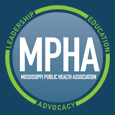Keywords
vaccine hesitancy, self-efficacy, response-efficacy, system-efficacy, susceptibility
Document Type
Research Studies
Abstract
Background: Since the release of the COVID-19 vaccine, vaccine hesitancy has been an issue in the southern states. Public health officials and communication experts have since been tasked with creating messages aimed at eliminating vaccine hesitancy.Purpose: The purpose of this study was to identify which perceptions regarding threat and efficacy are contributing to vaccine hesitancy in the Gulf States.Method: 226 participants from two groups, including the Gulf States and remaining U.S. states, responded to a survey measuring threat and efficacy perceptions, as well as vaccination status. Binary logistic regression was used to identify differences between the two groups.Results: Significant differences were detected between the two models in regard to self-efficacy, susceptibility, system-efficacy, and biological sex.Conclusion: This research brief recommends a variety of public health communication strategies specific to the Gulf States. Public health communicators should attempt to increase perceptions of self-efficacy and susceptibility. Messages successful in accomplishing this should increase vaccination rates. Second, two demographics should be targeted with this messaging, including men and those who may feel a false sense of security in their social support systems.
Recommended Citation
Bagley, B. H.
(2022). A false sense of security: The perceptions of threat and efficacy contributing to vaccine hesitancy in the Gulf States.
Journal of Public Health in the Deep South, 3(1), 2.
DOI: https://doi.org/10.55533/2996-6833.1015

